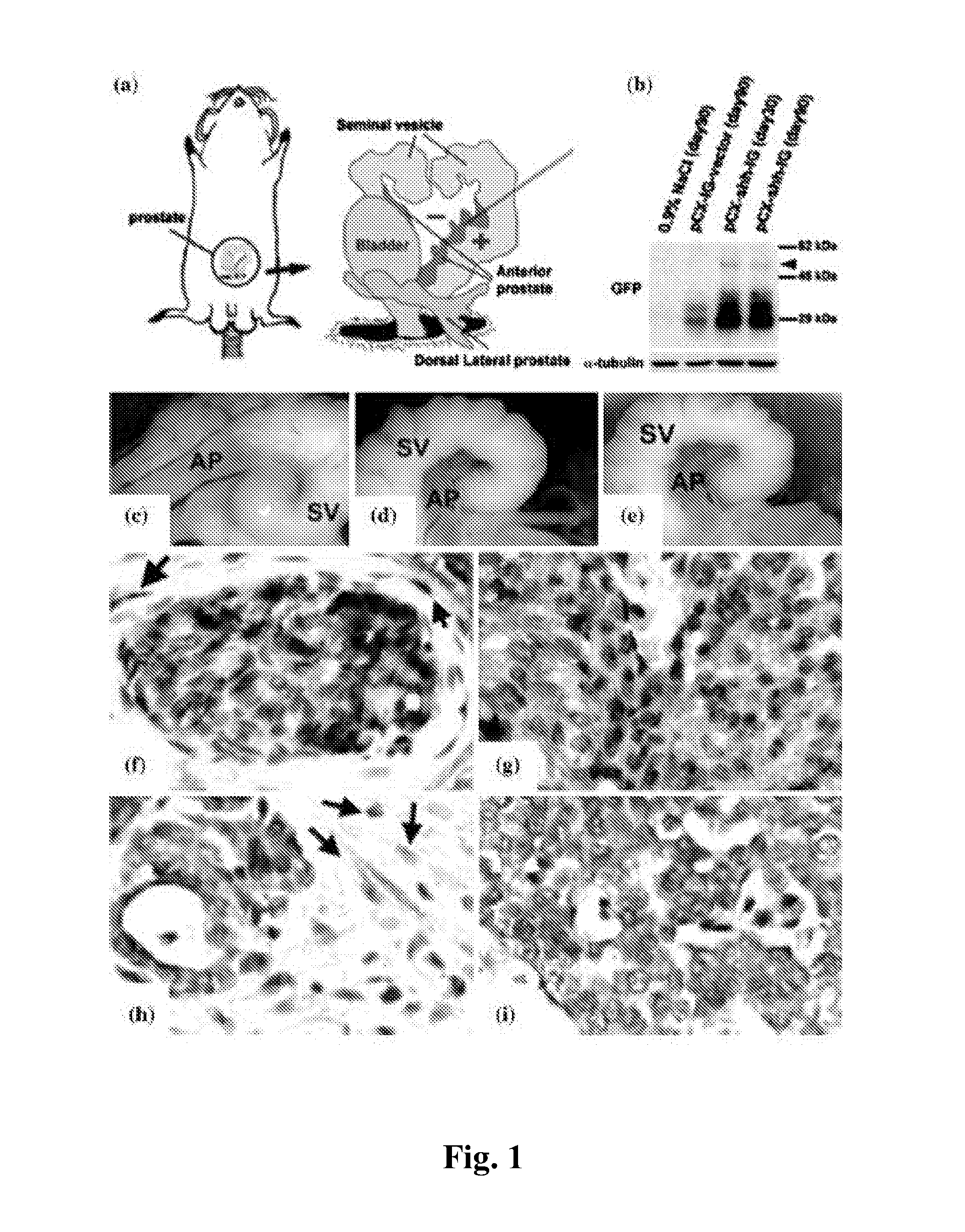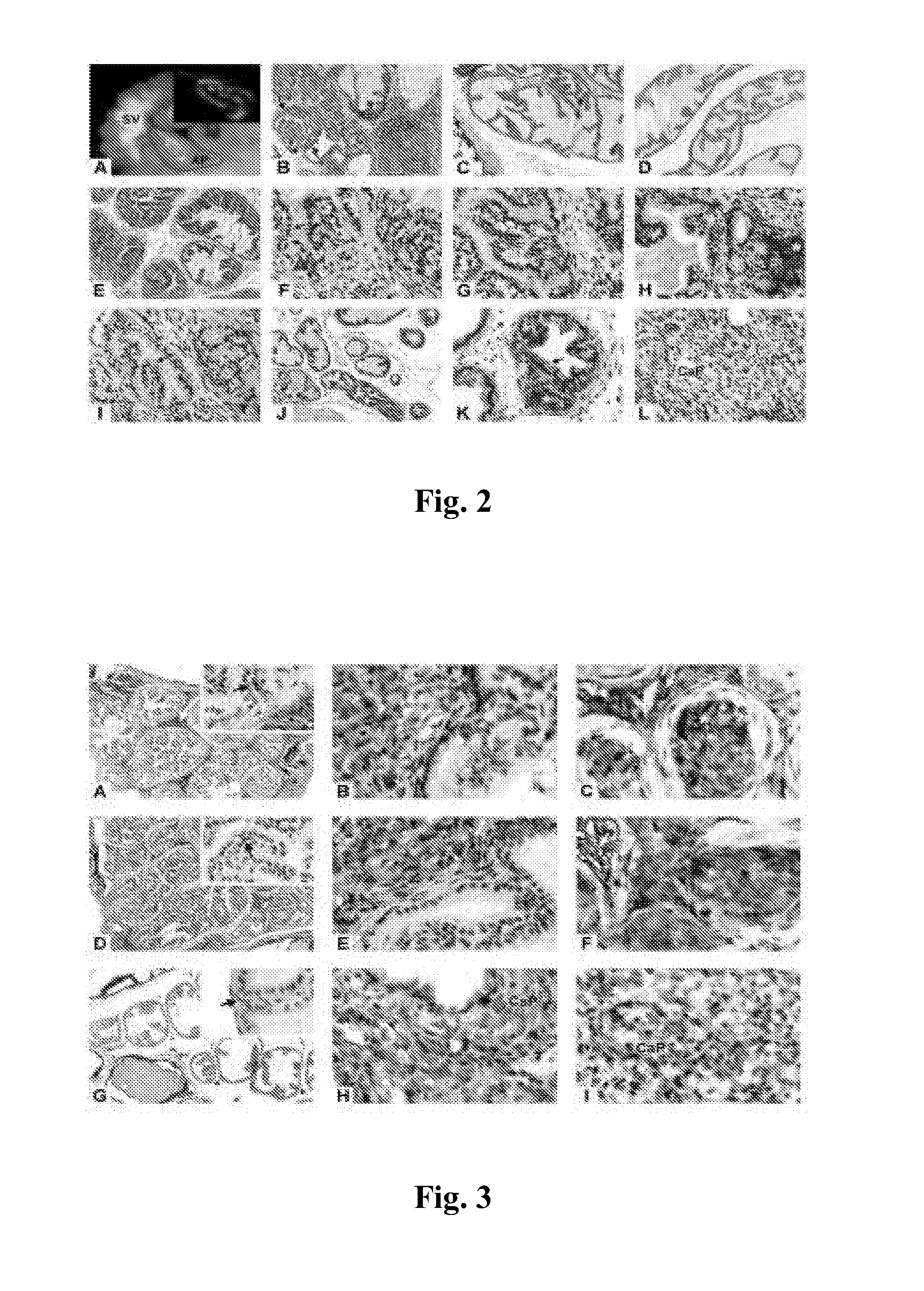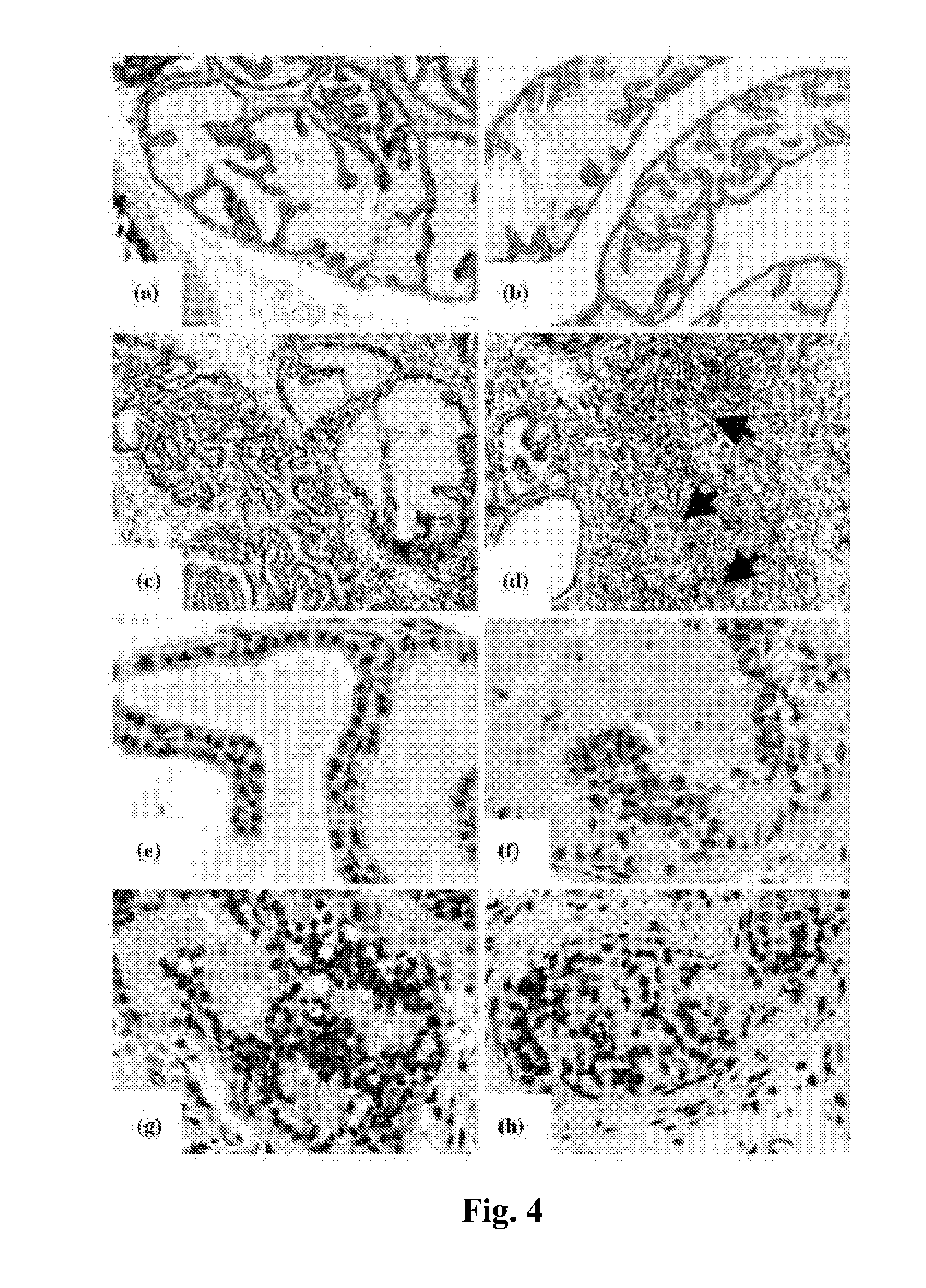Animal Model of Prostate Cancer and Use Thereof
a prostate cancer and animal model technology, applied in the field of mammals, can solve the problems of difficult to prove the malignant potential of patients, inability to determine the prognosis, and behind clinicians and basic researchers, and achieve the effect of less evident lobular formation
- Summary
- Abstract
- Description
- Claims
- Application Information
AI Technical Summary
Benefits of technology
Problems solved by technology
Method used
Image
Examples
example
Example 1
Construction of a Mouse Expressing Hedgehog Protein
[0043]The Shh expression and vehicle vector, pCX-shh-IG and pCX-IG, were provided by Dr. Kerby C. Oberg, Loma Linda University. Male outbred FVB strain mice aged 8 to 10 weeks purchased from National Laboratory Animal Center, Academia Sinica, Taipei, were used for the injections. The mice were anesthetized with phenobarbital and exposed of their prostate glands by surgery (FIG. 1). For each injection, 10 μl of pCX-Shh-IG at 0.1 μg / μl in 0.9% NaCl was injected into the anterior lobe alone or into both the anterior and the dorsolateral lobes. Parallel injections with 10 μl of pCX-IG in 0.9% NaCl or 0.9% NaCl alone were performed as controls. After injections, the prostate lobes were subjected to electric stimulations (electroporation) for 10 seconds set at 20 volts, 1 to 2 pulses per second, using a Digitimer DS7 Stimulator (Digitimer, Hertfordshire, England). After electroporation, the mice were caged and maintained until us...
example 2
Immunohistochemical Detection
[0044]To confirm the efficiency of the prostate cancer formation in the mouse model, immunohistochemical detection was conducted as stated below. Tissue were dissected, fixed in 4% paraformaldehyde in PBS (Sigma), and processed to obtain 7 μm thick sections following standard histological preparations. For Gli-1, Gli-2, Gli-3, Hip detections, the sections were processed through citrate buffer (pH 2.0) for 4 min, followed by another citrate buffer (pH9.0) for 5 min and thorough washes before antibody binding. For CK14, p63, GFP, E-cadherin, N-19, 5E1, Ptc-1, Fgfr-2, and Fgf-2, the sections were treated with citrate buffer (pH 6) for 10 min before antibody binding. For Fgfr-1, Fgf-7, and Fgf-10, proteinase K (10 μg / ml) treatment was performed on ice for 5 min before processing through citrate buffer (pH 8.0) and antibody binding. The slides were then covered with antibody solutions at 4° C. overnight, then further processed with biotinylated secondary anti...
example 3
Confirmation of Hedgehog Overexpression in the pCX-shh-IG Injections
[0045]To solidify any data obtained as a result of Hedgehog overexpression, we examined Hedgehog expression status after the manipulation. We first examined the presence of GFP signals in wholemount preparations and in tissue sections. When both methods showed no convincing signal, Western analysis was used as a double check. In wholemounts (data not shown), GFP signals were detected in 15 prostates in a total of 25 pCX-shh-IG injections and in 8 of the 10 pCX-IG injections, but in none of the 0.9% NaCl blank controls. With immunohistochemistry, 23 of the 25 pCX-shh-IG injections and 8 of the 10 pCX-IG injections exhibited definite signals for GFP, with no positive signal detected in the 0.9% NaCl injections (Table 1). The two pCX-shh-IG injections without definite GFP signal in tissue sections were double checked using Western analyses (FIG. 1b) and RT-PCR (data not shown); both were found positive for GFP. We then...
PUM
| Property | Measurement | Unit |
|---|---|---|
| Level | aaaaa | aaaaa |
Abstract
Description
Claims
Application Information
 Login to View More
Login to View More - R&D
- Intellectual Property
- Life Sciences
- Materials
- Tech Scout
- Unparalleled Data Quality
- Higher Quality Content
- 60% Fewer Hallucinations
Browse by: Latest US Patents, China's latest patents, Technical Efficacy Thesaurus, Application Domain, Technology Topic, Popular Technical Reports.
© 2025 PatSnap. All rights reserved.Legal|Privacy policy|Modern Slavery Act Transparency Statement|Sitemap|About US| Contact US: help@patsnap.com



